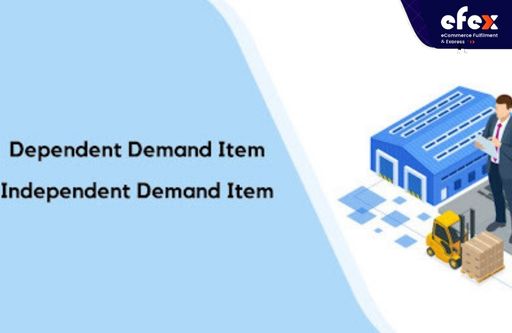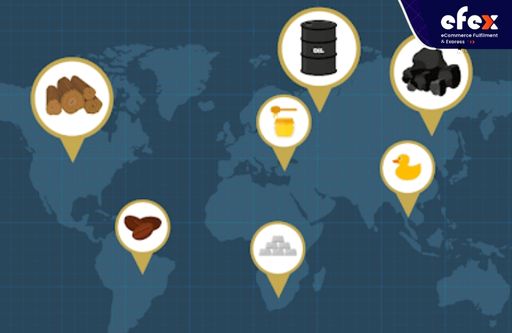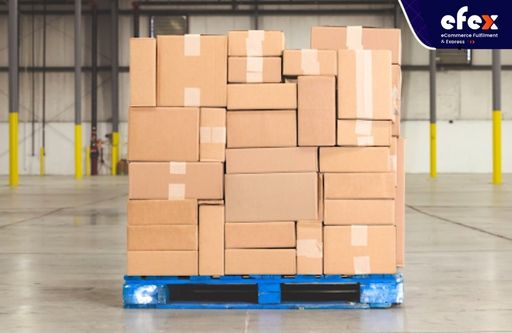
More Helpful Content
The role that inventory management plays in supply chain management, particularly for small businesses, has recently received a lot of attention. The same might be stated about how crucial inventory management is to any company operating in the retail industry or a sector similar.
There are some broad principles that owners of small businesses can go by to put them on the correct course for success in that regard, just like in any other field. That kind of instruction represents a prompt significant step.
However, not every inventory is created equal. And we're not going to provide you with an overview of small business inventory management today. Instead, we'd want to discuss how dependent demand item and independent demand item.

Let's now examine dependent demand products, a challenging part of inventory management for small businesses. Items in this category are sometimes referred to as "parent" items because their demand is dependent on the desire for other items. Generally, a dependent demand item refers to the demand for the item in question being influenced by the need for some other item such as subassemblies, assemblies, purchased parts, processed parts, and raw materials.
👉 Read More: Direct Product Profitability (DPP): Definition and Calculation

These goods always have higher-level counterparts, and the requirements are determined by calculating the demand for higher-level counterparts. Except in unusual circumstances of the parts-centered production line, such dependent demand products are often the items to be scheduled through MRP.
Predicting dependent demand as accurately as possible will help in avoiding resource waste and maximizing profit. It is more difficult to produce estimates for an item with dependent demand since the company must also consider how the need for its counterparts affects its own demand as well as how external economic factors are expected to affect both products.
Let's return to our earlier scenario and say your little company produces smartphones. You need to keep screens, batteries, and microprocessors on hand in order to accomplish this.

However, because no one wants to purchase microprocessors, end users do not affect microprocessor demand. People desire to purchase smartphones, but they are actually made of microprocessors and other parts.
A bill of materials (or BOM) is used to specify which parts are required and in what quantities. The relation between the independent demand item (such as a cellphone) and the dependent demand items is shown in this figure (e.g. two cameras, a battery, a screen, and a microprocessor). The BOM and any estimates created for the parent product utilizing a small company forecasting system are utilized as a starting point when controlling dependent demand stockpiles.
Restocking the raw materials, however, is more complicated than when there is independent demand. To establish order amounts, complicated scheduling procedures are used, like material requirements planning (or MRP). Both the quantity and the lead time for every component must be considered in this estimate. You must experiment with all of these variables to ensure that you acquire each item at the same time because batteries can take two weeks to arrive and microprocessors might take a month.
👉 Read More: Fixed Order Quantity: Model and Formula
The term "independent demand" describes the demand for a single item without relation to any other things. To put it another way, when demand for a product does not rely on demand for another product, that item is said to fall under the category of independent demand. Final products also known as Independent demand items are those that are produced for stock and sale or purchased by external customers.

Based on verified customer orders, projections, estimates, and previous historical data, independent needs for inventory are made. Even though it is so named, independent demand can nevertheless be impacted by economic factors that are not part of the demand-supply equation, such as overall consumer attitude and consumers' disposable income.
Nevertheless, since there are very few variables to account for the purposes of operations management, companies that must forecast the number of goods with independent demand required to satisfy their buyers have it simpler than companies that must determine the demands for goods with dependent demand.
Companies must be ready to adapt when consumer demand for specific services and products can shift. Products that are offered on their own rather than as part of packages are more susceptible to consumer whims. With sufficient independent demand, your company will be able to adapt to such sudden changes.
Consider a scenario in which your small retail business purchases and resells smartphones from a manufacturer. The demand for mobile phones is independent and is based on consumer trends and spending patterns.
For instance, demand for mobile phones should increase around Christmas. You might use a small company forecasting program that considers a number of outside elements to attempt and estimate demand. You can also make an effort to affect demand by carrying out marketing initiatives or, for instance, cutting the cost of your phones.
For independent demand products, inventory management is generally simple. Simply keep an eye on your stock levels and restock as needed, or establish a minimum amount and have your inventory control system do it for you. Forecasts and the length of time it requires for you to obtain a particular product can also have an impact on this. When a product has no history (for instance, if it is a new item), there is no historical data to base your projection on, which presents the biggest challenge when projecting demand for this kind of product.
👉 Read More: Cumulative Lead Time: Example And Calculation
So, we've gone through the details of two major types of demands for inventory: dependent and independent. Because the inventory management systems and procedures for the two groups differ, it is important to try to distinguish between them since the categories are dependent on demand trends. The distinctions between the two are explained below with examples.

As we analyzed above, the demand, for one thing, does not depend on the need for another product, the inventory of that item is classified as independent demand. The demand for that item depends on the demand for another item, the inventory of that item is classified as dependent demand.
As opposed to components and raw materials stocks, which rely on the need for final products and are hence known as dependent demand inventories, final items that are made for inventory and sale or ordered by external customers are known as independent demand items.
Depending on verified customer orders, projections, estimations, and previous historical data, independent demands for inventories (merchandise) are created. Regarding dependent demand goods, a company will need to consider what the predicted demand from buyers for their final products will be and order the items to satisfy that order.
While dependent demand stocks (components and raw materials used to make finished goods) are calculated and controlled using a program called Material Resources Planning (or MRP). It takes into account not only the volumes of every component part necessary but also the lead times required to manufacture and obtain the items, dependent demand inventories (completed products) are controlled by the sales order system and management of supply chains processes based on sales forecasts.
Demand for a finished good, such as a bicycle, car, television, computer, pizza, or phone, is referred to as independent demand. Demand for individual parts or subassemblies, in contrast, is known as dependent demand. For instance, the bicycle's wheels, computer microchips, a television's switch, pizza's cheese, or a phone's mouthpiece.
👉 Read More: Item Coding: Definition And Benefits
Inventory relationships can change over time and may also rely on the services a business provides. To establish whether a relationship exists and how it should be maintained, management at a store might examine the products in inventory and the store's general objective.
Knowing which of these types your products fit into is a good place to start on the road to effective inventory management for small businesses. The challenging element is putting in place the appropriate management mechanisms for all of the models that we will cover in the other articles.


